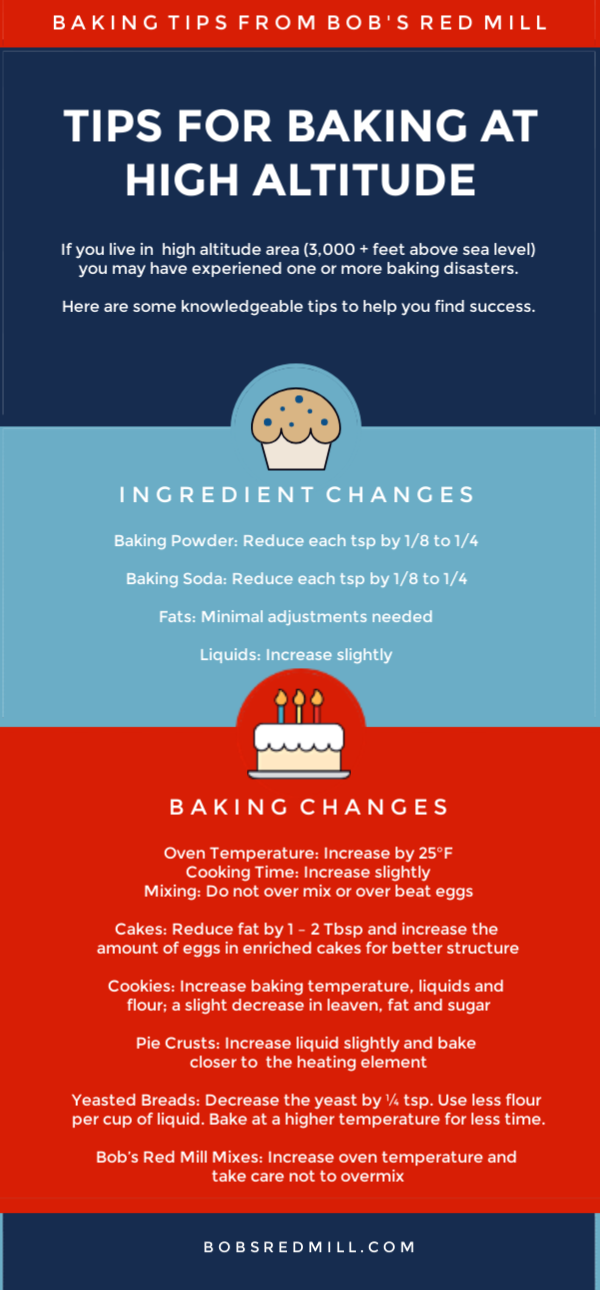If you live in a high altitude area (3,000+ feet above sea level) you may have experienced one or more of these kitchen disasters.
Baked a cake only to have the structure fall flat? Maybe you mixed up a batch of no-knead bread and the rising dough overflowed? Or maybe, your batch of muffins took *forever* to bake, only to be drier than ever?
High-altitude baking may seem totally baffling, but with some knowledgeable tips and tricks from us, you can find success when baking cookies or preparing food! Read on to learn how to bake perfect pastries in higher elevations.
Why is high-altitude cooking and baking different?
The answer is lower atmospheric pressure. The higher in elevation, the lower the atmospheric pressure - there’s a decrease of about ½ pound per square inch (psi) per 1,000 feet.
This change in atmospheric pressure can cause a myriad of unintended side effects in your baking and cooking. Leavening agents like baking soda, baking powder or yeast will seem like they have super powers - they rise fast and powerfully. A baked good will lose its moisture or seem dry as water and other liquids evaporate faster in comparison to sea level baking. Water boils at a lower temperature, which means items often take longer to cook/bake.
How do you adjust a recipe for high altitude baking?
Generally, we recommend to decrease leavening agents, increase liquids, and increase baking temperature and bake time. In some cases, it may be necessary to use less flour or more flour, depending on what you’re baking, or perhaps a different type of flour entirely.
How do you adjust baking mixes, like cake mix or muffin mix?
In baking mixes where you can’t make adjustments or reduce the ingredients, we recommend increasing oven heat and bake time. Take care not to overmix ingredients.
Here's a handy chart to reference (or pin for later!)



I hope this is still active. I made the Bob's gluten free starter mix and at the end of the recipe I made some sourdough bread. But, it didn't rise, just stayed pretty much the same height as when I put it in the oven. I do live at 6200 elevation. This was the first time I made the starter, but it appeared very nice (consistency was like a starter and smelled sour). The bread also had a wonderful sour taste.
After using it, I put it in the refrigerator but now I brought it back out to try again. I am doing the 4 day thing to reactivate it now. The recipe doesn't have any discard (like the original building recipe) so I understand that I wont remove any starter at this time?
Also, hopefully it will rise this time, but if it doesn't, can I add some yeast to help it along?
Thank you
This is what I did:
-Decreased the sugar in the recipe by 1 to 3 tablespoons per every cup.
-Decrease the baking powder and/or baking soda in recipes by 15 to 25%.
- Increase the liquid in your recipe by adding another egg or using an extra-large one; or add 3 to 4 tablespoons of water per cup of flour.
- For any other recipe with baking, you'll want to decrease the fat/oil in your recipe slightly (1-2 tablespoons) as it inadvertently weakens the structure of your baked good. Because fat breaks down gluten, making baked goods tender, it can be detrimental to your high-altitude baking endeavors, contributing to a collapsed cake or cookie.